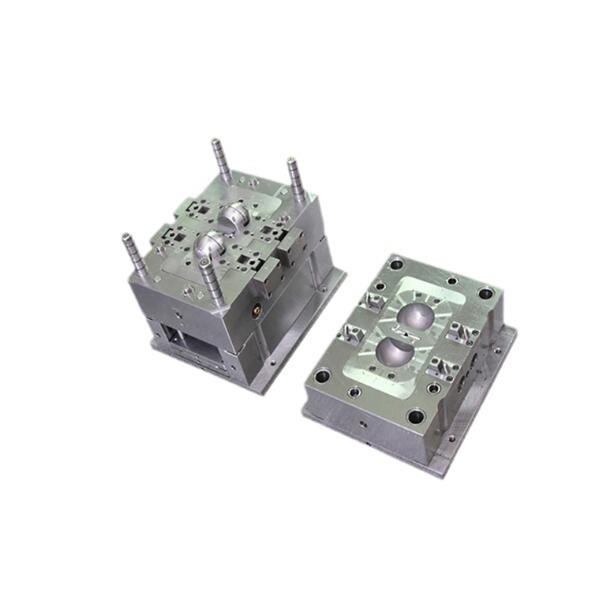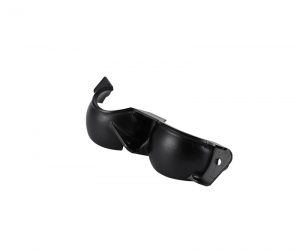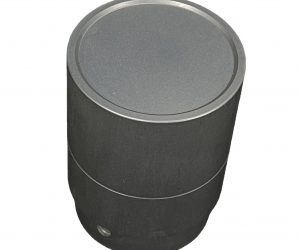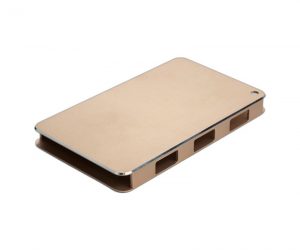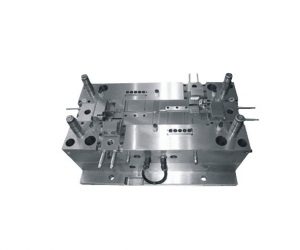Introduction
Unveiling the Power of Plastic Injection Technology
In the dynamic realm of modern manufacturing, plastic injection technology has emerged as a true game-changer. It's not just another manufacturing process; it's the backbone of countless industries, quietly but surely shaping the products we interact with daily. From the tiniest components in our electronic devices to the large, durable parts in automobiles, plastic injection technology is everywhere.
Think about your smartphone. The sleek casing, the precision - made buttons, and even the internal components that hold the device together - many of these are crafted through plastic injection molding. This technology has enabled manufacturers to produce complex, high - precision parts with incredible speed and efficiency. In fact, according to industry reports, the global plastic injection molding market was valued at over $300 billion in 2022 and is projected to grow at a CAGR of around 5% from 2023 - 2030. Such growth figures highlight its ever - increasing importance in the global manufacturing landscape.
So, how exactly is plastic injection technology molding the future? In the following sections, Yigu Technology will delve deep into the inner workings of this technology, explore its diverse applications, and uncover the innovative trends that are set to revolutionize the way we manufacture plastic products.
The Basics of Plastic Injection Technology
A Step - by - Step Process
Plastic injection technology is a fascinating manufacturing process that involves several precise steps. It all starts with the raw material: plastic granules. These granules are fed into the hopper of an injection molding machine. The hopper acts as a storage bin, supplying the plastic granules steadily to the next stage of the process.
Once in the machine, the granules enter the barrel. Inside the barrel, a heated screw rotates. As it does so, the friction generated by the rotation, combined with the external heating elements, melts the plastic granules. This process is called plasticization. The heat softens the plastic, transforming it from a solid state into a highly viscous, molten state. For Yigu Technology example, when processing polyethylene (PE), the barrel temperature might be set between 180 - 280°C, depending on the grade of the PE.
Next comes the injection phase. The molten plastic, now in a liquid - like state, is forced under high pressure through a nozzle and into a closed mold cavity. The pressure used during injection can vary widely, typically ranging from 50 - 200 MPa, depending on the complexity of the mold and the type of plastic being used. This high - pressure injection ensures that the molten plastic fills every nook and cranny of the intricate mold cavity, taking on the exact shape of the final product.
After the mold cavity is filled, the plastic needs to be held in place under pressure to compensate for any shrinkage that occurs as the plastic cools and solidifies. This is the 保压阶段 (holding pressure stage). During this time, additional molten plastic is injected into the cavity to maintain the shape and dimensions of the product accurately. The holding pressure is usually lower than the injection pressure but is crucial for producing high - quality parts with consistent thickness and surface finish.
As the plastic cools, it solidifies and takes on the shape of the mold. Cooling is a critical step as it determines the final properties of the plastic part. The cooling time can range from a few seconds to several minutes, depending on the size and thickness of the part. For instance, a small, thin - walled plastic part might cool in just 5 - 10 seconds, while a large, thick - walled component could take 30 seconds or more to cool adequately. Cooling is often facilitated by circulating cool water or other cooling media through channels within the mold.
Once the plastic part has cooled and solidified sufficiently, it's time for the final step: (ejection). The mold opens, and a mechanical ejector system, which could be in the form of pins or plates, pushes the finished plastic part out of the mold cavity. The part is now ready for further post - processing, such as trimming excess material, painting, or assembly with other components.
Key Components and Their Functions
- Screw: The screw is a fundamental component of the injection molding machine. Its main function is two - fold. First, during the plasticization stage, it rotates to convey the plastic granules from the hopper into the heated barrel. As it rotates, the screw compresses and shears the plastic granules, generating heat through friction. This heat, along with the external heating of the barrel, melts the plastic. Second, during the injection phase, the screw acts as a piston, pushing the molten plastic forward towards the nozzle and into the mold cavity. The design of the screw, including its pitch (the distance between adjacent threads) and the length - to - diameter ratio, can significantly impact the plasticization and injection processes. For Yigu Technology example, a screw with a larger pitch may be more suitable for processing high - viscosity plastics as it can provide greater forward thrust.
- Barrel: The barrel serves as the chamber where plasticization occurs. It is equipped with heating elements, usually in the form of electric heating bands, that surround the barrel. These heating elements raise the temperature of the barrel to the required levels for melting the plastic. The barrel must be made of a material that can withstand high temperatures and the abrasive action of the rotating screw and the flowing molten plastic. Common materials for barrels include alloy steels, which offer good heat resistance and wear resistance. The temperature of the barrel is precisely controlled in different zones. The zone closest to the hopper is usually cooler to prevent premature melting of the plastic granules, while the zone near the nozzle is the hottest to ensure the plastic is fully molten and has the right viscosity for injection.
- Mold: The mold is perhaps the most critical component as it determines the shape of the final plastic product. A mold consists of two halves: the stationary half (also known as the cavity half) and the moving half (also called the core half). When the mold is closed, the two halves come together to form a cavity with the exact shape of the desired plastic part. The mold is typically made of steel or aluminum due to their high strength and heat - conducting properties. Steel molds are more durable and suitable for high - volume production, while aluminum molds are lighter and have better heat transfer characteristics, making them a good choice for some applications where faster cooling is required. Molds can be highly complex, with features such as cores, cavities, slides, and ejector systems. For example, a mold for producing a plastic toy with intricate internal structures may have multiple cores to create the hollow spaces and detailed features within the toy. Additionally, molds may be designed with cooling channels to facilitate efficient heat transfer during the cooling process, ensuring that the plastic part cools evenly and quickly.
How Plastic Injection Technology Is Molding the Future
In the Automotive Industry
In the automotive industry, Yigu Technology plastic injection technology has become an indispensable part of vehicle manufacturing. It plays a crucial role in the production of interior components, exterior parts, and engine components.
Interior Components: When you step inside a car, many of the components you see and touch are made through plastic injection molding. Dashboards, door panels, and center consoles are often crafted from injection - molded plastics. These plastics offer a high degree of design flexibility, allowing automotive designers to create sleek, ergonomic, and aesthetically pleasing interiors. For example, a modern dashboard can have complex curves and multiple integrated features such as instrument clusters, air vents, and storage compartments. Traditional materials like metal or wood would be much more difficult and costly to shape into such intricate designs. Moreover, plastic injection - molded interior components are generally lighter than their metal counterparts. According to industry data, using plastic injection - molded parts for interior components can reduce the weight of a vehicle by up to 20 - 30%. This weight reduction directly contributes to improved fuel efficiency, as the engine has to work less to move the vehicle. A study by a leading automotive research institute found that for every 10% reduction in vehicle weight, fuel efficiency can increase by 6 - 8%.
Exterior Parts: Plastic injection technology is also widely used for manufacturing exterior parts such as bumpers, fenders, and spoilers. These parts not only enhance the vehicle's appearance but also contribute to its safety and aerodynamics. Bumpers made from injection - molded plastics are designed to absorb and dissipate energy during a collision, reducing the impact on the vehicle's structure and its occupants. Compared to metal bumpers, plastic bumpers are more flexible and can better withstand minor impacts without denting or deforming permanently. In terms of production, plastic injection molding allows for faster manufacturing times and lower production costs. A report by an industry analytics firm shows that the production time for a plastic injection - molded bumper can be up to 50% less than that of a metal - stamped bumper, and the cost per unit can be reduced by 30 - 40%.
Engine Components: Even in the engine compartment, plastic injection - molded components are making their mark. Components like intake manifolds, valve covers, and engine mounts are increasingly being made from high - performance plastics. These plastics can withstand high temperatures and mechanical stresses while offering excellent chemical resistance. For instance, intake manifolds made from injection - molded plastics can improve engine performance by optimizing the air - fuel mixture delivery. They are also lighter than traditional metal intake manifolds, which helps in reducing the overall weight of the engine. The use of plastic injection - molded engine components has been steadily increasing over the past decade. Market research indicates that the market share of plastic injection - molded engine components has grown from around 15% in 2010 to over 30% in 2023, and this growth trend is expected to continue.
In the Electronics Sector
The electronics sector has greatly benefited from plastic injection technology, especially in achieving the miniaturization, lightweight design, and design diversification of electronic products.
Miniaturization and Lightweight Design: Take smartphones as an example. The demand for ever - smaller, thinner, and lighter smartphones has driven the use of plastic injection - molded components. The outer casing of a smartphone is often made through plastic injection molding, allowing for a sleek and slim profile. This not only makes the device more portable but also contributes to its overall aesthetics. Inside the smartphone, components such as battery housings, circuit board holders, and speaker enclosures are also commonly made from injection - molded plastics. These plastics are lightweight, which is crucial for reducing the overall weight of the device. In fact, plastic injection - molded components can account for up to 60 - 70% of the total weight of a smartphone. A study by a major electronics manufacturer found that by using plastic injection - molded components, they were able to reduce the weight of their latest smartphone model by 15% compared to the previous generation, without sacrificing functionality or durability.
Design Diversification: Plastic injection technology enables the creation of complex and unique designs for electronic products. Tablets, for instance, can have a variety of shapes and textures on their backs, thanks to plastic injection molding. This allows manufacturers to differentiate their products in the highly competitive electronics market. The ability to create custom - designed plastic components also extends to wearables such as smartwatches and fitness trackers. These devices often have ergonomic designs that fit comfortably on the wrist, and plastic injection - molded parts play a key role in achieving such designs. In addition, plastic injection - molded components can be easily integrated with other materials such as metals and glass, further expanding the design possibilities for electronic products.
In Medical Applications
In the medical field, plastic injection technology is used for a wide range of applications, from manufacturing complex medical devices to producing disposable medical supplies.
Medical Devices: Many medical devices, such as syringes, catheters, and surgical instruments, are made using plastic injection molding. These components need to meet strict medical - grade standards for hygiene and precision. For example, syringes made through plastic injection molding are designed to be sterile, have accurate volume measurements, and be easy to use. The high - precision nature of plastic injection molding ensures that the inner diameter of a catheter is consistent, allowing for smooth fluid flow. A study on the production of medical catheters found that plastic injection - molded catheters had a defect rate of less than 1%, compared to other manufacturing methods that had a defect rate of up to 5%. This high level of precision and quality control is essential in the medical field, where any defect could have serious consequences for patient health.
Disposable Medical Supplies: Disposable medical supplies like gloves, medical trays, and specimen containers are also commonly made through plastic injection molding. These supplies are designed to be used once and then discarded, reducing the risk of cross - contamination. Plastic injection - molded disposable medical supplies are cost - effective to produce, making them widely available in healthcare facilities around the world. The global market for plastic injection - molded disposable medical supplies is expected to reach over $50 billion by 2025, driven by the increasing demand for infection control and the growth of the healthcare industry in emerging economies. This growth not only reflects the importance of plastic injection technology in meeting the needs of the medical field but also its potential for further innovation and expansion in medical applications.
Conclusion
The Ever - Expanding Horizon of Plastic Injection Technology
Plastic injection technology has firmly established itself as a cornerstone of modern manufacturing, with its tentacles reaching into almost every industry imaginable. From the automotive sector, where it contributes to vehicle lightweighting, enhanced design flexibility, and improved performance, to the electronics industry, enabling the miniaturization and design diversification of our beloved gadgets, and the medical field, ensuring the production of high - precision, hygienic medical devices and cost - effective disposable supplies.
Innovations in mold design and manufacturing, including the use of advanced 3D printing techniques to create molds, will lead to faster prototyping and the ability to produce even more complex and customized plastic parts. 3D - printed molds can be designed and produced in a fraction of the time it takes for traditional molds, allowing manufacturers to quickly iterate on designs and bring products to market faster.
Automation and Industry 4.0 integration will further enhance the efficiency and precision of plastic injection molding processes. With the use of sensors, robotics, and artificial intelligence, injection molding machines can be self - monitoring and self - adjusting, optimizing production parameters in real - time to reduce waste, improve product quality, and increase production speed.
In Yigu Technology conclusion, plastic injection technology is not just molding products; it's molding the future. Its continued innovation and development will play a pivotal role in shaping the products we use, the industries we rely on, and the world we live in. As manufacturers, engineers, and consumers, we should embrace these advancements and look forward to the exciting possibilities that lie ahead.
Frequently Asked Questions
- What are the common types of plastics used in plastic injection technology?
Common types of plastics include polyethylene (PE), polypropylene (PP), polystyrene (PS), acrylonitrile - butadiene - styrene (ABS), and polycarbonate (PC). Each has its own unique properties, such as strength, flexibility, heat resistance, and chemical resistance, making them suitable for different applications. For example, PE is often used for packaging due to its low cost and good chemical resistance, while PC is used in applications that require high - impact resistance, like smartphone screens.
- How can I ensure the quality of plastic injection - molded products?
To ensure quality, you need to carefully control the process parameters, including temperature, pressure, and injection speed. Using high - quality raw materials and well - maintained molds is also crucial. Regular inspection of the products during and after production, such as checking for defects like warping, shrinkage, or surface flaws, can help identify and address quality issues promptly. Additionally, proper mold design, including appropriate cooling channels and gate locations, can contribute to consistent product quality.
- What are the limitations of plastic injection technology?
One limitation is the high initial cost of setting up the injection molding equipment and molds, which may be a barrier for small - scale producers. There are also limitations in terms of the size and complexity of the parts that can be produced. Very large or extremely complex shapes may be difficult to achieve with traditional plastic injection methods. Moreover, the recycling and disposal of plastic injection - molded products can be a challenge due to environmental concerns, although the development of biodegradable plastics is helping to mitigate this issue.
